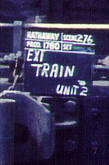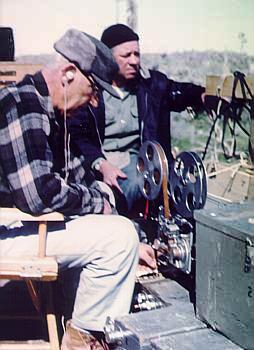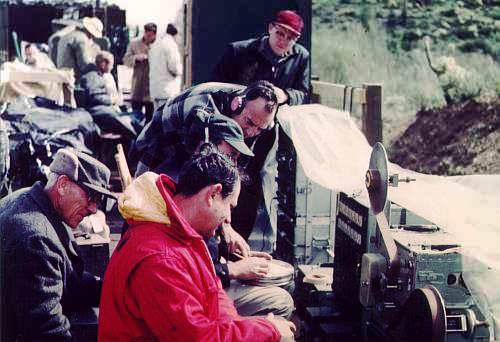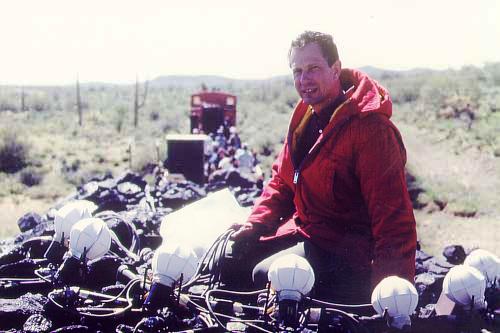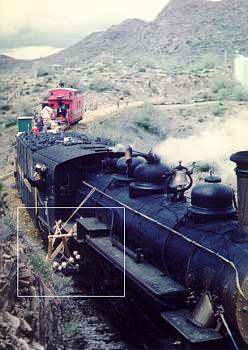
Sound Recording For

How The West Was Won is usually thought of as a Metro-Goldwyn-Mayer picture shown in Cinerama. But other than some sequences being photographed in Ultra Panavision, for the sake of simplicity or actor safety, and the reduction of Cinerama's standard frame rate from 26 to 24 fps, it really was a Cinerama production financed by Metro-Goldwyn-Mayer. There's a fine distinction there. For even though other large format systems had developed sound systems nearly as elaborate, from an exhibition standpoint, as Cinerama, the studios never grasped why Cinerama sounded more realistic than the mixes they assembled in their own extensive sound departments. The reason is simple to understand, though, like most other aspects of the Cinerama process, it involves more work from the production crew.
The photos shown here were shot during 2nd unit work to record sound effects for the train in "The Outlaws" sequence of How The West Was Won.
Setting the scene.
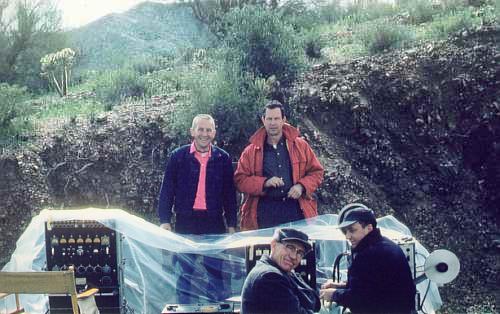
Seen here are some of the sound recorders used on the production. They use seven channel 35mm full coat magnetic film.
Today it is common practice to record sound effects with two audio channels, one picking up the overall sound, and a second to pick up just the left part. Through a bit of wizardry, multiple channels are then derived from the differences between the two tracks. With Cinerama, however, five, six, or seven channels were recorded live. Here is a microphone array set up to catch the sound of the train from the top of the tender. Note that there are seven microphones in this curved array. This sound is mated up with live action material photographed in the same location.
These photos show a five microphone array mounted to the side of the locomotive so that background sounds can be recorded to mate up with closeup shots of the driver wheels seen in the film.
The need for live sound recording became obvious to the developers of Cinerama during the production of the Cypress Gardens sequence of This Is Cinerama. No sound was recorded of the motorboats in the Florida location as it was assumed that stock sound could be rechanneled and panned to achieve the desired effect. When this was done, however, it was determined that the results were less than lifelike. The crew went to a location not far from Oyster Bay, NY and made live seven channel recordings of boats. This is what is heard, with great realism, in the first Cinerama production.
E-mail the author
CLICK HERE
©1997 - 2000 The American WideScreen Museum
http://www.widescreenmuseum.com
Martin Hart, Curator

